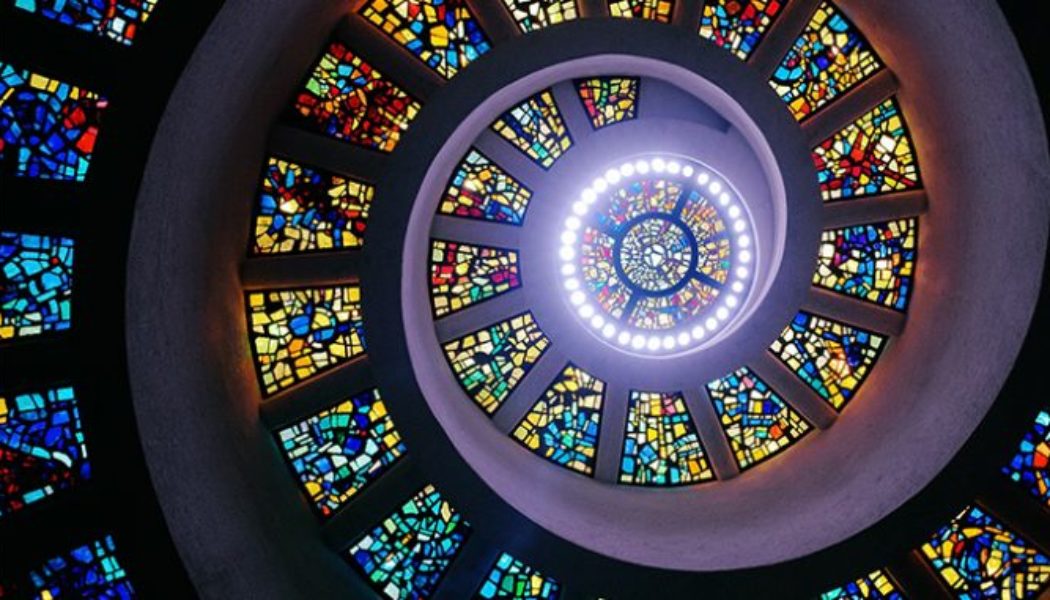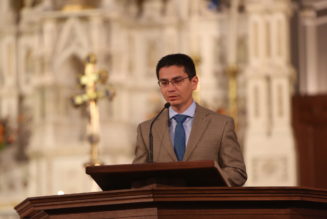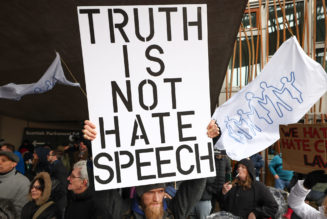
Catholic media has been reacting the last two weeks to Cardinal McElroy’s recent piece on synodality and “radical inclusivism” in the Church. Responding to some of his critics, his Eminence appeared on the America magazine podcast “Jesuitical: A Podcast for Young Catholics” to explain his views more fully.
Part of Cardinal McElroy’s clarifications about both his article and the general contention among Cardinals included the concept of the “hierarchy of truths.” He used this concept to position the subject matter of his article—LGBT, women’s roles in the Church, etc.—as part of a debate of truths that are of “much less important” when compared to “those elements at the heart of the Gospel.”
My focus here is not those specific topics and debates over them. What I will point out is that whatever the merits or weaknesses of his positions on those contentious issues, McElroy’s use of the concept of the “hierarchy of truths” is at best misleading and even very inaccurate. In fact, McElroy appears to be under the common but erroneous impression that the hierarchy of truths is a categorization of Church teaching in which the unquestionable, most certain truths are at the top, while the less certain and more debatable “truths” are at the bottom (and those we can bandy about, though whether indefinitely or not is not clear from his commentary).
If this is what McElroy means, he is mistaken. The hierarchy of truths is not a classification of levels of certainty or importance, but rather an expression of the analogy of faith—the Regula Fidei—that illustrates how the various true doctrines and propositions of Church teaching relate 1) to each other and 2) to the most fundamental or central truths of the Faith on which they are based and from which they flow.
If this seems like a distinction without difference, it shall be clearer later. But, first, we need to look at what McElroy actually said about the concept.
Cardinal McElroy’s explanation of the hierarchy of truths
McElroy states:
There’s an interesting thing that’s not talked about a lot that’s called the hierarchy of truths in Catholic faith. Some people believe, think that the Catholic Church believes that every every teaching is the same in importance. It isn’t. There’s a hierarchic of truths, [which] means there’s certain things that are crucial to being a Catholic and those are the ones I just talked about. There’s a whole lot of teachings that go on in the life of Churches that are much less important. Okay, so there are many disagreements … [these] disagreements are not one of those I’m talking about at the height of the hierarchy. That’s not where they are.
Again, it seems clear that McElroy is insisting there are some “truths” at the top of the hierarchy that are “crucial to being a Catholic.” These truths are apparently what unite us and are not negotiable. Then there are truths at the bottom, presumably, that we disagree about and have at least some degree of negotiability. These truths are “much less important.” Also implied here is that the descent of the hierarchy of truths includes a gradation of certainty, with the most certain truths at the top and the less certain, or debatable, truths at the bottom.
McElroy explains that this hierarchy expresses how the Church is “not a monolithic institution” and that “there are disagreements about things.” The truths are the top of the hierarchy are characterized by a “tremendous amount of commonality”. A part of this commonality at the top, along with “the life, death, and resurrection of Jesus” and “the love of God—the Father, Son, Spirit,” is also, apparently, the following:
Our personal relationships that we form with God, and that all members of the Church strive in their lives to live out, and live out the teachings of the Gospel as best we can, knowing that we all fail in those areas and that we depend upon God’s grace. So on the whole range of issues, [those] are the most important.
By this explication, what the hierarchy of truths represents is not so much the relation of doctrines but how we as Catholics relate to each other and live out our faith, including the ways in which we fail to do so. This is perhaps the most strange of his explanations of the hierarchy, as he illustrates with this anecdote:
When I was a pastor I used to give talks in my own parish and then at other parishes, and one of the things I’d ask people—because we’d be talking about Catholic teaching and what it means—I’d ask people (and we might have a crowd a couple hundred people) I’d say, somebody’d ask about, saying: “I have a problem with a certain teacher at the church and I find it hard to accept this one. Does that mean I can’t be Catholic?”
So what I would say is: “Will everyone in the room please raise their hand who obeys every teaching of the Church.” And often there would be one or two men—it was always men—who would raise their hand, and not infrequently, their wives would haul their hands down and say, “no, you don’t.” … so that’s important for the context, you know, that all of us find certain things difficult to live out and find certain teachings of the Church hard to understand and accept. And so- but it’s not in that core area…the core area is what makes us, uh, people of faith that makes us a universal church. And it’s not that the other issues are unimportant, but they’re not at the very center of what it means to be a Catholic. And so I think any discussion of, you know, where Cardinals disagree—and we do disagree on things—but it’s not at…those elements at the heart of the Gospel.
With all due respect, I struggle to find the relevance here. As best I can tell, the logic is that none of the faithful “obeys every teaching of the Church” and everyone knows it (aside from a few stupid men here and there). Therefore, because “all of us find certain things difficult to live out and find certain teachings of the Church hard to understand and accept,” these are not in the “core area” that “makes us people of faith…a universal Church.” So as McElroy concludes, the hierarchy of truths expresses “where Cardinals disagree…on things.”
Serious conceptual problems
One of the biggest weaknesses of this account of the hierarchy of truths is that it simply doesn’t make any sense. This is not how truth works. I understand that McElroy is making comments on a podcast, but he clearly appears to suggest that the essential truths of the hierarchy are what we all agree on, while those we don’t agree on represent non-essential or “less important” truths. But this is contrary to the nature of what “truth” is. Truths are not true because people agree on them; they are true because they really are true. This may look like tautology, but it’s the classic law of identity. Agreement is not what makes true things true. They are true whether people agree on them or not.
Now, perhaps McElroy is not saying that the agreement makes them true, but that the core truths express what we are most certain about, while the rest exist in gradations of certainty. But this doesn’t fare much better conceptually. I don’t think we would put adultery being a sin, or even marriage itself, at the core or top level of the hierarchy of truths. However, this doesn’t mean we are less certain what the Scripture, Tradition, and Magisterium teach about the sacramental reality of marriage and the sinful nature of adultery. There are myriad truths that are not at the core of the Gospel or the hierarchy of truths, yet are nevertheless utterly certain and not negotiable.
Finally, there is McElroy’s odd illustration about whether or not all people obey every teaching of the Church. But there is a important distinction missing here: to obey or live out a teaching (or not) is not the same thing as understanding and accepting that teaching. One could accept that gossiping is wrong and yet remain a terrible gossip. Someone can also obey a teaching that he does not at all understand. This is an unwarranted amalgamation, and it appears to be rhetorical.
By blurring the distinction between obeying Church teaching (which, indeed, none of us does perfectly) and accepting Church teaching as true, McElroy implies that insisting on some truths in Church teaching is really just being judgmental, because we are all sinners. But that is not the issue here. Indeed, unwarranted amalgamation aside, it is again conceptually problematic: struggling to understand or accept a teaching, or even to obey and live out a teaching, does not bear on whether or not that teaching is true.
The hierarchy of truths in Catholic teaching
In fact, the hierarchy of truths expresses the relationship of truths revealed through Scripture, Tradition, and the Magisterium. It does not express that something is more true and less true (whatever that would even mean), nor does it express things that are more certain and less certain. And it certainly does not express what is more important and less important. The hierarchy of truths expresses how each truth is ordered in a nested network of conceptual and practical relations back to the fundamental truths held and taught by the Catholic Church.
A key explanation of the phrase “hierarchy of truths” appears in Unitatis redintegratio, where the context is ecumenical dialogue:
The Catholic faith must be explained more profoundly and precisely, in such a way and in such terms as our separated brethren can also really understand. Moreover, in ecumenical dialogue, Catholic theologians standing fast by the teaching of the Church and investigating the divine mysteries with the separated brethren must proceed with love for the truth, with charity, and with humility. When comparing doctrines with one another, they should remember that in Catholic doctrine there exists a “hierarchy” of truths, since they vary in their relation to the fundamental Christian faith. Thus the way will be opened by which through fraternal rivalry all will be stirred to a deeper understanding and a clearer presentation of the unfathomable riches of Christ. (UR, 11)
The document continues:
Before the whole world let all Christians confess their faith in the triune God, one and three in the incarnate Son of God, our Redeemer and Lord. United in their efforts, and with mutual respect, let them bear witness to our common hope which does not play us false. (UR, 12)
It is true that the Fathers of Vatican II saw in the hierarchy of truths a strategy for starting dialogue with our Christian brethren on the fundamental points of agreement, before addressing differences and disagreements. But this is not meant to characterize dialogue within the Church—quite the contrary, it assumes that this network of truths would be accepted by all Catholics, while also realizing that those truths “vary in their relation to the fundamental Christian faith.”
And while the Catechism and other resources have pointed out the value of using the hierarchy of truths for effectively teaching the faith, it is for helping the faithful understand the structure of our faith—not for telling the faithful what they have to believe, or what they can take or leave.
That is to say, they don’t all relate back to the core truths—such as the Trinity, Incarnation, purpose and hope of salvation history—in the same way and via the same route. Truths (and, again, they are true) about marriage, the Eucharist, social responsibility, metaphysics, ecclesial communion, and so forth all relate to the fundamental Christian mysteries revealed as such, and they all relate to each other, but obviously not through the same avenues of conceptual logic or origin. Some truths, for example, are more clearly revealed in Scripture, and/or Tradition, and some are worked out by the logical demands of what those truths teach.
Meanwhile, there are some things that we cannot be sure about, areas in which there is still recourse to debate and speculation. But by definition, these are not part of the hierarchy of truths, because the certitude of their truth has not yet been established.
Conclusion
The hierarchy of truths, then, does not denote some “truths” as fundamental and non-negotiable, and other “truths” as questionable, as if they are up for debate or reversal. Douglas Bushman, in a CWR article on this very topic, provides this helpful quote from Cardinal Christoph Schönborn:
The ‘hierarchy of truth’ does not mean ‘a principle of subtraction,’ as if faith could be reduced to some ‘essentials’ whereas the ‘rest’ is left free or even dismissed as not significant. The ‘hierarchy of truth . . . is a principle of organic structure.’ It should not be confused with the degrees of certainty; it simply means that the different truths of faith are ‘organized’ around a center (Introduction to the Catechism of the Catholic Church, p. 42).
Again, all of this is not to engage Cardinal McElroy on any particular conclusion that he has come to about inclusion, even though there is much there that can and should be engaged. All I wish to point out is that his justification for his conclusions, approach, and methods should not be based on his apparent understanding, or at least his explanation of, the hierarchy of truths, because that understanding and explanation is, simply put, false.
If you value the news and views Catholic World Report provides, please consider donating to support our efforts. Your contribution will help us continue to make CWR available to all readers worldwide for free, without a subscription. Thank you for your generosity!
Click here for more information on donating to CWR. Click here to sign up for our newsletter.









